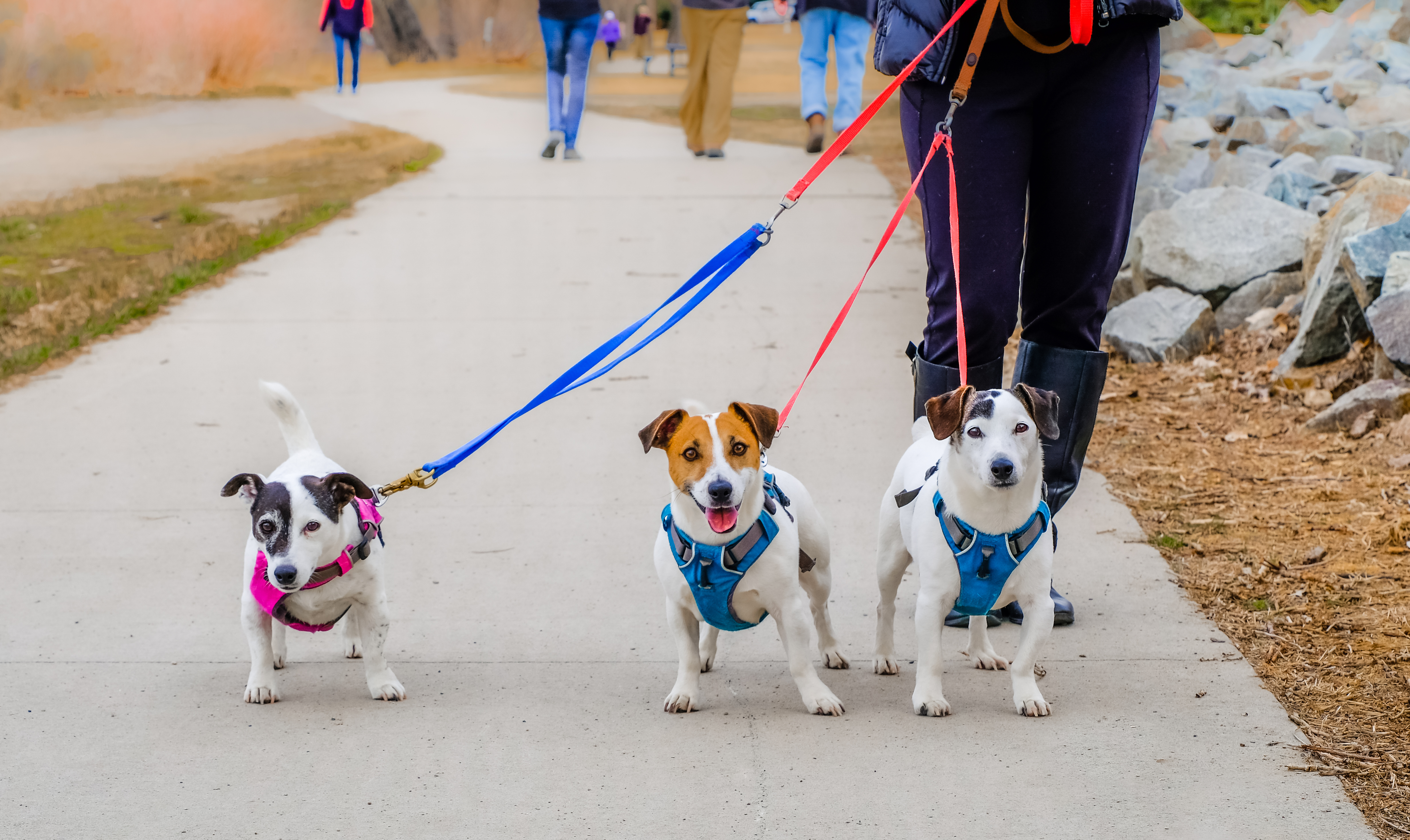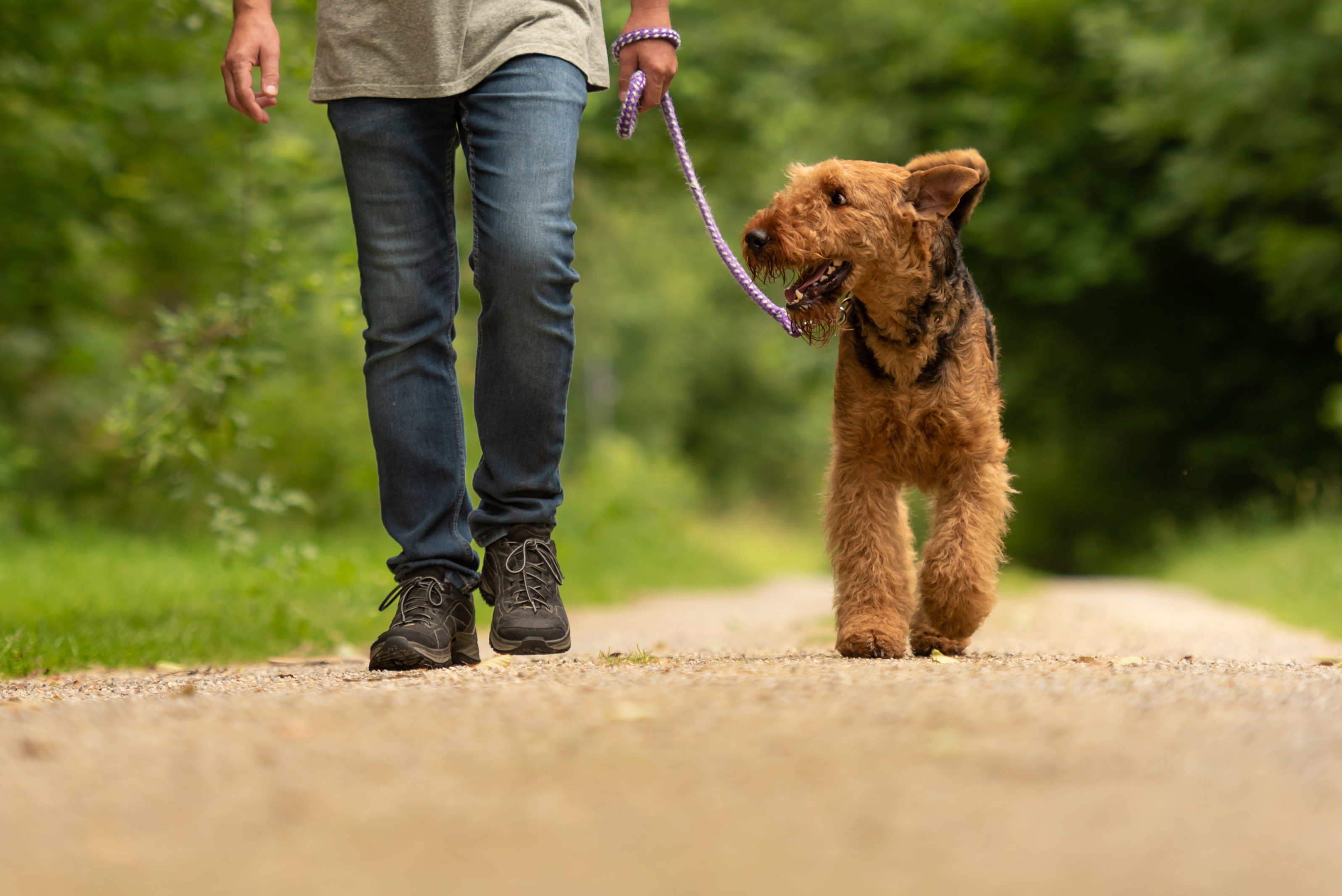
5 Ways to Make Dog Walks Even Better
Walks are a daily part of your and your dog’s routine. Not only are they a crucial aspect of your pup’s exercise regimen, but they’re also a fantastic way for you and your dog to spend some quality time together and for you to get some exercise, as well.
Going on a walk with your dog may seem simple enough, but there a few key tips to keep in mind to make your once- or twice-daily excursions even safer and healthier for your dog. Here are five things to keep in mind before you strap on the leash and head out the door.
1: Use a harness instead of a collar

Most dogs wear a collar around their neck day in and day out, often with an ID tag that contains contact info in case the pup gets lost. For your average walk during the day, you may be tempted to strap your dog’s leash to their collar in a hurry and walk that way.
However, using a harness instead of a collar for walking may help keep your dog safer while you’re out and about. Harnesses wrap around your dog’s chest, shoulders and back to provide more security.
Harnesses are great choices for dogs that are still learning commands and how to walk appropriately outside. They’re also ideal for dogs that tend to lunge or jump during walks, since they provide a lot more control and restraint. Additionally, they help prevent against choking or neck restriction and better control dogs that like to wriggle out of their collars. Dogs can even experience respiratory and throat problems from pulling too hard on a collar!
Try taking your dog to the store with you to find a harness that fits it comfortably. It should not be too restricting or tight around its body, but it should be snug so your dog stays in it. Make sure both the leash and harness are of a good-quality material.
2: Walk in low-traffic areas for safety and comfort
If you live near a busy street or bustling urban hub, it might be the most convenient place for you to walk your dog every day. Unfortunately, high-traffic areas can pose some serious safety risks for your dog, especially if it isn’t extremely well-behaved.
Your dog could also get frightened by a high volume of people, other pets and loud noises and may even run away from you. Additionally, it can be difficult to moderate close interactions with other dogs—especially if your dog is excitable or aggressive.
If your dog is easily spooked or seems overwhelmed in busy areas, stick to quieter, low-trafficked locations like parks or residential neighborhoods. And, no matter where you walk, make sure you stay on the sidewalk to avoid potential collisions with cars or bikes.
3: Shake up your path
In the same way that you might get sick of walking on the same loop every single day, your dog probably gets bored of it, too. To make walks more fun and engaging for your dog, try to change up your walking path and try out new areas.
Walking in different locations helps to keep things fresh for you, and it helps stimulate your dog’s brain a little more each day. Being in a new place with new sights, sounds and smells can help your dog register new information and keep it active mentally, which is extremely important, especially as he or she ages.
4: Keep an eye on the sky

You may not be able to avoid inclement weather on every walk, but it is very important to stay mindful of the temperature outside and get prepared before you leave. Extreme temperatures—both in the lows and the highs—could pose health risks for your pup.
If it’s snowing outside and the temperature is really low, your dog might benefit from an extra layer. Consider purchasing a sweater for your pup if it is small or has very short or fine fur to keep it warm. Booties may also be a good idea to protect your dog’s paws from ice, salt or de-icing chemicals.
If it’s really hot outside, you might want to wait until the sun goes down to take your pooch for a walk. Dogs don’t have many ways of regulating their body temperatures and can easily suffer from heatstroke after too much sun exposure.
If you do have to walk in the heat, make sure you bring extra water and a bowl with you and take breaks in cool, shaded areas so your dog has some time to cool off.
5: Prioritize training at home
Part of what can make walks with your dog safer and more fun actually begins at home during training. Take time to train your dog with a strong recall, just in case it gets away from you while you’re on a walk.
Teaching your dog to stop barking, to sit and to not chase are other useful tricks to have up your sleeve during walks. The more time you put into training your dog at home, the easier and safer your walks with it should become, since it will be better behaved and respond to your commands more consistently.
With these tips, you and your dog are sure to have safer and more exciting walks together in the future!


